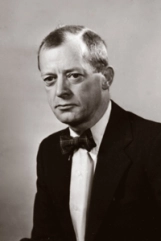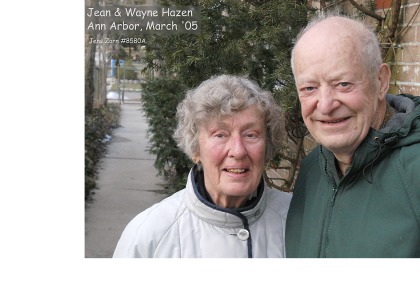Obituary
Alfred Z. (Fred) Hendel, professor emeritus of physics, died peacefully at his home in Ypsilanti, Michigan on October 7. 2010 at the age of 93. Fred was born October 19, 1916 in Vienna, Austria. He attended the schools necessary for admission to university, but when the Nazis came to Austria in 1938, Fred escaped, helping others to escape also. He moved to Bolivia where he spent the next 17 years and came to love that beautiful country. At first, he earned his living in many ways – as an electrician, a newspaper photographer, and as teacher of Spanish. But in 1945 he returned to physics by joining the science faculty of the University of La Paz.
Fred loved skiing and helped to build a ski lodge and the first ski lift in South America on Mt. Chacaltaya. This, at an elevation of 5200 meters above sea level, was also the location of a cosmic ray research station in which he had become involved. Fred left Bolivia in 1954 for France, where he attended the Sorbonne and from which he received his Ph.D. in physics in 1956 under the direction of Professor Leprince-Ringuet; Louis DeBroglie, who was soon to win his Nobel Prize, was another of the members of his thesis committee. Fred and his French colleagues were using cloud chambers to study the new discovery that mesons could be produced by cosmic rays. This led to an offer of a research position at Princeton University in 1957, and Fred was subsequently recruited by Wayne Hazen to join the faculty of the Physics Department at the University of Michigan in 1959. With Hazen, he continued his cosmic ray research in Bolivia; together they made significant advances in the studies of radio signals in the 10 – 100 MHz frequency range produced by extensive air showers of cosmic rays at the Mt. Chacaltaya research station..
 Fred enjoyed teaching and his interactions with students. He was skilled at solving difficult problems with simple solutions and was always ready to help others. He introduced his department to the “Keller” self-paced method for teaching introductory physics, a method that offered advantages over the traditional lecture/discussion section format. This was an important, early step in the evolution of introductory physics teaching at Michigan.
Fred enjoyed teaching and his interactions with students. He was skilled at solving difficult problems with simple solutions and was always ready to help others. He introduced his department to the “Keller” self-paced method for teaching introductory physics, a method that offered advantages over the traditional lecture/discussion section format. This was an important, early step in the evolution of introductory physics teaching at Michigan.
Fred retired from the University in 1986. In his retirement, he wrote two books, Mountains in Bolivia and Revolutions in Bolivia, in which he described some of his experiences. He was a man of many interests, from mountain climbing and skiing to playing bridge and chess. Fred loved life; he had enormous courage, a great sense of humor, and always enjoyed a good time. Fred is survived by his wife Florence to whom he was married for 43 years, by his nephew George Hendel, his niece Noemi Hendel, and their children.
Comments and Additions from those who knew Fred are most welcome.


